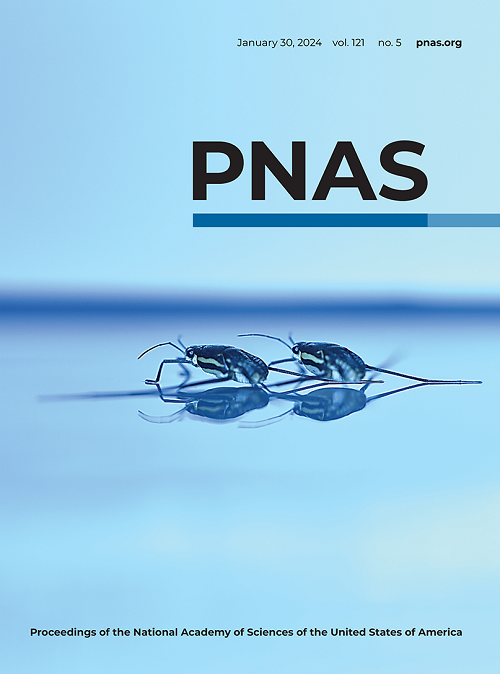A mouse model of Jansen’s metaphyseal chondrodysplasia for investigating disease mechanisms and candidate therapeutics
IF 9.4
1区 综合性期刊
Q1 MULTIDISCIPLINARY SCIENCES
Proceedings of the National Academy of Sciences of the United States of America
Pub Date : 2025-06-02
DOI:10.1073/pnas.2500176122
引用次数: 0
Abstract
Jansen’s metaphyseal chondrodysplasia (JMC) is a rare disorder caused by activating mutations in the parathyroid hormone (PTH)/PTH-related peptide (PTHrP) receptor (PTH1R). Patients exhibit short stature, dysmorphic bones, and severe growth plate abnormalities, as well as hypercalcemia, hypercalciuria, hypophosphatemia, and reduced plasma PTH levels. Humanized PTH1R (hPTH1R) mice expressing the H223R-hPTH1R JMC mutation die early without breeding. We therefore generated and characterized a stable mouse line expressing the T410R-hPTH1R allele, which confers a milder disease phenotype in patients. Mutant mice show near-normal longevity and reproductive capacity yet exhibit a profound skeletal phenotype characteristic of the disease. The long bones of T410R mice are markedly misshapen and have expanded metaphyses with disarrayed chondrocyte zones in growth plates and reduced primary spongiosa. PET/CT scanning revealed diminished uptake of [用于研究疾病机制和候选治疗方法的Jansen干骺端软骨发育不良小鼠模型
Jansen 's干骺端软骨发育不良(JMC)是一种由甲状旁腺激素(PTH)/PTH相关肽(PTHrP)受体(PTH1R)激活突变引起的罕见疾病。患者表现为身材矮小、骨骼畸形和严重的生长板异常,以及高钙血症、高钙血症、低磷血症和血浆甲状旁腺激素水平降低。表达H223R-hPTH1R JMC突变的人源化PTH1R (hPTH1R)小鼠在不繁殖的情况下过早死亡。因此,我们产生并鉴定了一种表达T410R-hPTH1R等位基因的稳定小鼠系,该等位基因赋予患者较轻的疾病表型。突变小鼠表现出接近正常的寿命和生殖能力,但表现出疾病的深刻骨骼表型特征。T410R小鼠长骨明显畸形,生长板中软骨细胞带紊乱,外骨骼扩大,原发海绵减少。PET/CT扫描显示生长板区域[18 F]-氟化钠摄取减少,与矿化和血管化减少一致。基因消融Hdac4挽救了T410R小鼠的生长板异常,从而确立了pth1r - g - α - s- camp - pka - sik3 - Hdac4 /5通路是JMC中生长板异常的主要介导因子。T410R小鼠血清钙升高,内源性甲状旁腺激素抑制,急性注射优化后的甲状旁腺激素拮抗剂可使这两项指标恢复正常。因此,T410R小鼠代表了一种稳定的JMC动物模型,它概括了该疾病特征的骨骼发育和矿物质离子稳态异常。这些小鼠将有助于进一步确定JMC表型的细胞和分子机制,并开发一种潜在的治疗模式。
本文章由计算机程序翻译,如有差异,请以英文原文为准。
求助全文
约1分钟内获得全文
求助全文
来源期刊
CiteScore
19.00
自引率
0.90%
发文量
3575
审稿时长
2.5 months
期刊介绍:
The Proceedings of the National Academy of Sciences (PNAS), a peer-reviewed journal of the National Academy of Sciences (NAS), serves as an authoritative source for high-impact, original research across the biological, physical, and social sciences. With a global scope, the journal welcomes submissions from researchers worldwide, making it an inclusive platform for advancing scientific knowledge.

 求助内容:
求助内容: 应助结果提醒方式:
应助结果提醒方式:


